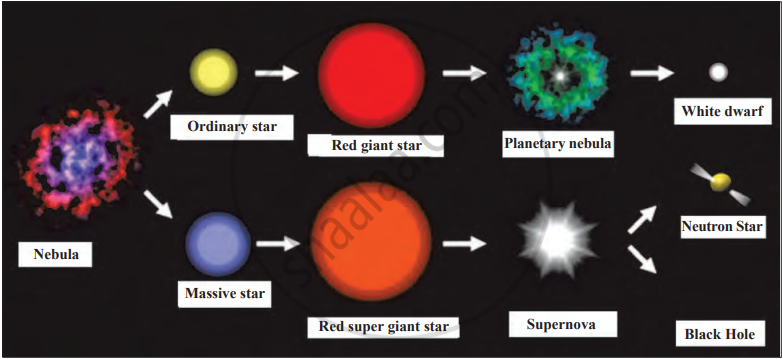
Lifecycle of stars
The heavenly bodies that twinkle are called stars. The thousands of twinkling stars that we observe in the clear night sky are part of our Milky Way. At night, about 4000 stars are visible to the naked eye, including the Sun, which is an ordinary star.
Massive stars can either
Collapse into an extremely dense neutron star. If very large, they form a black hole, where gravity is so strong that even light can't escape. This entire process takes millions to billions of years. Each stage of a star's life depends on how massive it was at birth.

Lifecycle of stars
| Type of Star | Shape and Size | Temperature | Features | Examples |
| Sun-like Stars | Similar in size to the Sun, slightly varying. | Typically similar to the sun's temperature. | Main sequence stars burn hydrogen into helium. | Sirius, Alpha Centauri |
| Red Giants | Much larger than the Sun, 10 to 100 times the Sun's diameter. | 3000°C to 4000°C. | Expanded due to the exhaustion of hydrogen, it appears red from cooler temperatures. | Betelgeuse |
| Supernovae | Extremely large, it can outshine galaxies briefly during the explosion. | 3000°C to 4000°C before explosion. | A massive explosion at the end of a star’s life cycle ejects most of its mass. | SN 1987A |
| Binary/Twin Stars | Similar to single stars, it includes two stars orbiting each other. | Varies based on the star types. | Influence each other’s evolution, sometimes sharing or transferring material. | Algol |
| Variable Stars |
Similar in size to other stars, but diameter changes. | Increases when contracting, decreases when expanding. | Brightness varies due to expansion and contraction, which affect energy output. | Polaris (North Star) |